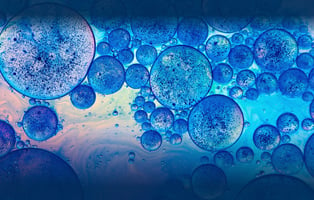QuantiGene™ Plex Gene Expression Assays from Invitrogen™ use hybridization-probe-based branched DNA technology to simultaneously quantify up to 80 known genes of interest per well of a 96- or 384-well plate.
Hundreds of preconfigured gene panels optimized for direct use in the QuantiGene™ Plex system allow the detection of the expression of core genes in many biological processes, from human apoptosis to cancer, with custom assays available for the investigation of specific pathways of interest or other disease-associated genes.
But, as high-throughput next-generation sequencing approaches now provide a more genome-wide unbiased perspective on the expression of most genes in the genome, and advances in sample multiplexing allow thousands of samples to be investigated simultaneously, where does this leave assays detecting lower numbers of genes in fewer samples?
In this article, we take a look at the specific features and workflow of QuantiGene™ Plex Gene Expression Assays to provide you with a basis to understand how this biased target-focused technology compares to unbiased gene expression profiling with MERCURIUS™ DRUG-seq discussed in our follow-up article.
QuantiGene™ Plex is probe-based and uses branched DNA technology
Many next-generation sequencing gene expression assays are based on unbiased amplification and quantification of short RNA fragments, but Invitrogen™ QuantiGene™ Plex Gene Expression Assays use a hybridization-based approach comprising panels of up to 80 pre-defined target-specific probe sets that hybridize to mRNA transcripts of interest for direct RNA quantification (Thermo Fisher Scientific, 2023a).
These pairs of 20 nucleotide-long target-specific probes complement desired mRNA sequences and are bound to color-coded fluorescent xMAP™ beads from Luminex™ (Luminex, 2023). The color of each bead corresponds to the unique probe set per specific gene and is detected by lasers with a Luminex™ FLEXMAP 3D™ instrument. This coloring enables subsequent identification of each transcript.
To detect the precise quantity even of low abundance transcripts present in a sample, branched DNA technology is used to amplify fluorescent signals up to 2,400 X per bound mRNA copy, rather than the target mRNA itself (Thermo Fisher Scientific, 2023b).
The amount of fluorescence detected from these branched DNA “trees” directly corresponds to the amount of mRNA present and removes the need for prior RNA purification, cDNA synthesis, and PCR amplification, stages that are often problematic, leading to sample loss, RNA degradation, or amplification biases.
The QuantiGene™ Plex Gene Expression Assay workflow
The workflow comprises four main stages.
1. Sample preparation
QuantiGene™ assays work with cultured cells, animal tissues, formalin-fixed paraffin-embedded tissues (FFPE), whole blood, blood collected with PAXGene blood tubes or purified RNA. The relevant QuantiGene™ Sample Processing Kit is required to lyse samples to release RNA, depending on the sample type.
2. Target hybridization
Binding to the correct mRNA sequence and robust signal amplification is achieved by incubating prepared samples overnight with color-coded xMAP™ beads bound to target-specific probe set panels. These probe sets comprise capture extenders to extend the probe sequence, probes to block unbound sequences, and label extenders that act as the roots to anchor the DNA branching “tree.”
3. Signal amplification
After the initial hybridization of sequence-specific probe sets to their complementary RNA, pre-amplifier molecules bind to each pair of label extenders, followed by the binding of amplifier molecules. Multiple biotinylated label probe oligonucleotides then hybridize to each amplifier and act as the “leaves” of each branched DNA “tree” to achieve efficient signal amplification.
4. Detection
Streptavidin phycoerythrin is added and reacts with the biotin on the label probes in each branched DNA “tree.” This reaction produces a signal proportional to the amount of target RNA present in the sample and is detected by excitation with a laser using a Luminex™ instrument.
Are QuantiGene™ Plex Gene Expression Assays for me?
While useful for detecting the expression of known panels of biomarkers and lowly expressed genes in difficult samples like FFPE tissue, one limitation of QuantiGene™ Plex Gene Expression Assays is that only 80 mRNA targets based on known sequences can be investigated in only 384 samples per assay, providing only a small snapshot of gene expression in cells, tissues, or disease samples. Novel transcripts are also missed with this approach.
For exploratory drug discovery, biomarker detection, or lead generation studies, a more thorough genome-wide picture of the gene expression networks and novel transcripts contributing to complex pathways or drug interactions may be more informative without the need for prior target selection.
The current world of next-generation RNA-seq-based approaches, with technologies such as MERCURIUS™ DRUG-seq, now makes exploratory gene expression profiling possible for around 20,000 genes in thousands of samples simultaneously, in an unbiased, quicker, and more cost-effective way than possible with previous gene expression profiling technologies (Alpern et al., 2019).
Click here to learn more about novel RNA-seq-based approaches such as MERCURIUS™ DRUG-seq.
References
-
Alpern, D. et al. (2019) ‘BRB-seq: Ultra-affordable high-throughput transcriptomics enabled by bulk RNA barcoding and sequencing’, Genome Biology, 20(1), pp.1-15. Available at: https://doi.org/10.1186/s13059-019-1671-x.
-
QuantiGene™ Plex Gene Expression Assay Product Page | Thermo Fisher Scientific (2023a). Available at: https://www.thermofisher.com/us/en/home/life-science/gene-expression-analysis-genotyping/quantigene-rna-assays/quantigene-plex-assay.html
-
QuantiGene™ Plex Gene Expression Assay Brochure | Thermo Fisher Scientific (2023b). Available at: https://assets.thermofisher.com/TFS-Assets/LSG/Application-Notes/quantigene-assays-app-note.pdf
-
xMAP™ technology | Luminexcorp (2023). Available at: https://www.luminexcorp.com/xmap-technology/#overview




